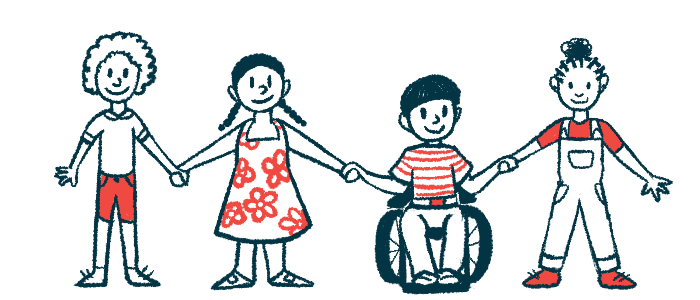Best outcomes seen in real life with Zolgensma when given early: Study

In real-world settings, the one-time gene therapy Zolgensma (onasemnogene abeparvovec-xioi) is well tolerated and improves motor function outcomes in children with spinal muscular atrophy (SMA) — especially when given at ages younger than 8 months — a study in Israel found.
Treatment with Zolgensma also was found to be more effective if administered to patients before symptom onset, which reinforces “the importance of early recognition of SMA via newborn screening programs,” the researchers wrote.
“Ongoing improvement of functional motor abilities was seen in the vast majority of the participants in our study, as evidenced by increasing scores on motor functional tests over time,” the team wrote, adding, “Better progress in motor function was observed in individuals who received [Zolgensma] earlier and who were presymptomatic, irrespective” of other factors.
The study, “Real-Life Outcome After Gene Replacement Therapy for Spinal Muscular Atrophy: A Multicenter Experience,” was published in the journal Pediatric Neurology.
Improvements in motor function scores seen with Zolgensma gene therapy
SMA is caused by mutations in the SMN1 gene and the consequent deficiency in the SMN protein, which results in the gradual loss of motor neurons, the nerve cells that control movement.
Zolgensma is gene therapy designed to deliver a healthy copy of that gene to cells, increasing the amount of SMN protein and improving motor function. It was approved in the U.S. in 2019 for newborns and toddlers up to age 2 with all types of SMA.
Numerous clinical trials and real-world studies have demonstrated the safety and efficacy of Zolgensma in SMA. Now, a team in Israel added to that data by describing the real-world outcomes of 25 infants and toddlers with SMA treated with Zolgensma at four medical centers in the country. The study involved 15 boys and 10 girls; outcomes were reported after a median follow-up of 18 months.
The majority of patients — 21 children — had been diagnosed with type 1 SMA. There also were two patients with type 2 disease and two presymptomatic patients presumed to have SMA type 1.
At the time of their treatment with Zolgensma gene therapy, the children ranged in age from 11 days to 23 months old, with a mean age of 6.1 months. Among them, 16 had not received any previous treatment, while eight had been given Spinraza (nusinersen) and one had received Evrysdi (risdiplam).
In the first week after Zolgensma infusion, eight patients (32%) had fever and six (24%) experienced respiratory complications that required non-invasive respiratory support — although all had shown mild upper respiratory viral illnesses before the infusion. Seven of the children (28%) had low platelet levels, known as thrombocytopenia.
Over the first year after treatment, the majority of patients had elevations in liver enzymes. While this is a sign of liver problems, no patient experienced liver damage. Most of the children also had elevations in troponin-I, indicating potential damage to cardiac and skeletal muscles, but no patient had sustained cardiac adverse events.
The researchers assessed motor function outcomes in type 1 patients using the Children’s Hospital of Philadelphia Infant Test of Neuromuscular Disorders (CHOP INTEND) motor scores. In this standard measure of motor function in infants with SMA, higher scores indicate better function. The total possible score is 64.
Increases in the CHOP INTEND scores were detected starting at one month after infusion and continued to improve over time. At the end of the follow-up, patients gained a median of 13 points in those scores. The majority of patients (76%) reached scores higher than 40 points, which is rarely seen in untreated SMA patients.
Type 2 SMA patients were assessed with the Hammersmith Functional Motor Scale Expanded for SMA (HFMSE), and experienced gains of 11 points in their scores.
80% of patients given Zolgensma gene therapy able to sit up
Additional findings showed that SMA type 1 patients who received treatment before the age of 8 months had significantly greater improvements in motor function than patients treated later — a median of 18 points versus eight points.
Those who received Zolgensma before 8 months also had much greater improvements than patients who received Spinraza before 8 months (an increase of 22 vs. 6.5 points).
At … this report, 24 (96%) of the 25 patients in our cohort have exceeded the survival threshold of age 12 months without relying on constant invasive respiratory support, as is known to occur in 100% of patients with SMA type 1 who receive supportive care alone.
None of the patients showed a decline or loss of motor function abilities after receiving the gene therapy. At the last follow-up, 21 patients were able to control their head and 20 could roll over. A total of 20 children were capable of sitting up, 18 of them without assistance. Also, nine were able to crawl, nine could stand up (three unassisted), and eight were able to walk (three without assistance).
Using the normal age ranges of motor milestone achievements defined by the World Health Organization, the researchers identified five patients as the “best motor achievers.” These patients had received Zolgensma gene therapy at a significantly younger age — a median of 1.7 months versus 7.85 months. The children also were presymptomatic at the time of treatment, and had not required ventilatory support at any stage of their disease.
“At the time of the writing of this report, 24 (96%) of the 25 patients in our cohort have exceeded the survival threshold of age 12 months without relying on constant invasive respiratory support, as is known to occur in 100% of patients with SMA type 1 who receive supportive care alone,” the researchers wrote.
Overall, “our study reinforces the importance of national health insurance coverage of the costs of [Zolgensma] for individuals with SMA,” the team concluded.
The post Best outcomes seen in real life with Zolgensma when given early: Study appeared first on SMA News Today.



